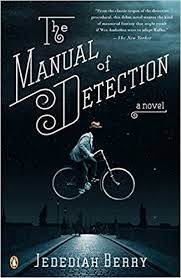It was that dream again—always the same dream. This opener might feel familiar; once you start looking, it’s everywhere. If not increasing in frequency, the recurring dream as literary trope has lately gained a certain prominence of placement: “Always the same dream,” reports the narrator in paragraph two of Nathan Larson’s post-apocalyptic detective novel, The Dewey Decimal System; “Always the same dream,” echoes the first line of Vladimir Sorokin’s post-Soviet dystopia, Day of the Oprichnik; “These were the same dreams he’d been having for years,” begins part two of Zone One, Colson Whitehead’s take on the urban zombie wasteland. And so on.
Dream interpretation and detective noir are familiar bedfellows. The connection may even be a commonplace: the crime as a patient’s suppressed primal trauma, the detective as analyst. Even so, why the primacy, and the psychological obtuseness, of the recurring dream as a means to convey psychological information about these stories’ otherwise nonemotive antiheroes?
We might round up the usual suspect: Hollywood. The genres of film most closely related to the above books—sci-fi, fantasy, mystery thriller—have long used the device as shorthand for psychic scene-painting (Jonathan Pryce’s steel-winged fantasias in Brazil), amnesia-obscured backstory (Harrison Ford’s flashbacks to his wife’s murder in The Fugitive), or foreshadowing (Bruce Willis’s premonitions of death in Twelve Monkeys). In these films, the dream’s repetition renders it significant; it becomes a pattern for the viewer to follow, demanding interpretive work, much as the repeated word in a poem accrues retroactive significance.
Yet such dreams often fail to compel, on the screen or on the page. “That’s not how it is at all!” we want to shout, as we storm out of the theater or throw the book across the room. Dreams in real life aren’t like crossword puzzles, with rationally decodable clues, or—worse—like mere waking memories.
It’s refreshing, then, to read a contemporary American novel that gets this. In The Manual of Detection, Jedediah Berry finds a clever, reflexive extreme for the film-inspired confluence of dreams and detection, all while gently skewering the familiar gangsters, femmes fatales, and acerbic dicks of Chandler or Hammett. In Manual, no gumshoe foregoes his trench coat, no snitch fails to double-cross, no dialogue goes un-pulped. (“I had her all wrong,” Berry’s detective admits of an inscrutable dame every time she revises her allegiances—four or...
You have reached your article limit
Sign up for a digital subscription and continue reading all new issues, plus our entire archives, for just $1.50/month.
Already a subscriber? Sign in





